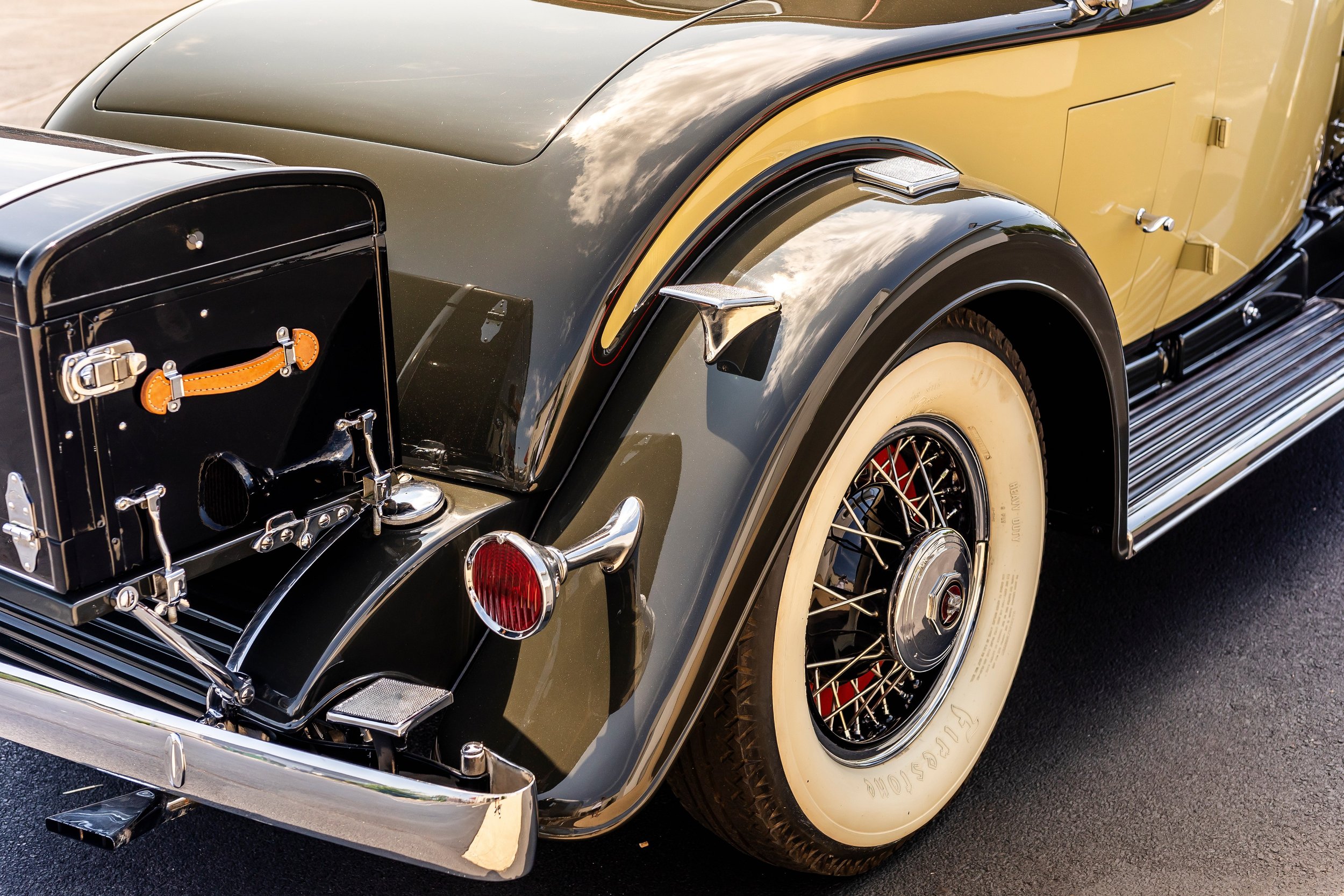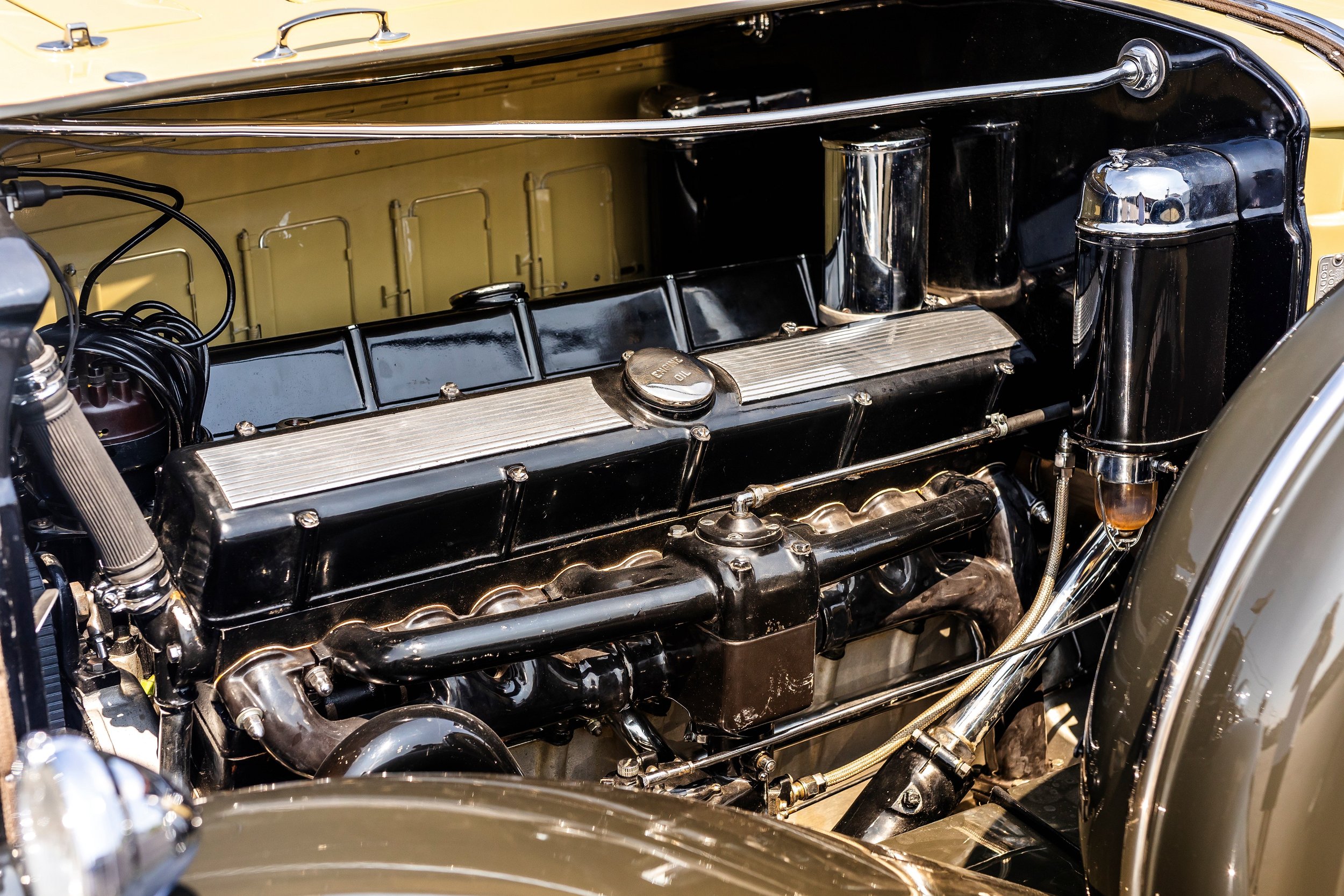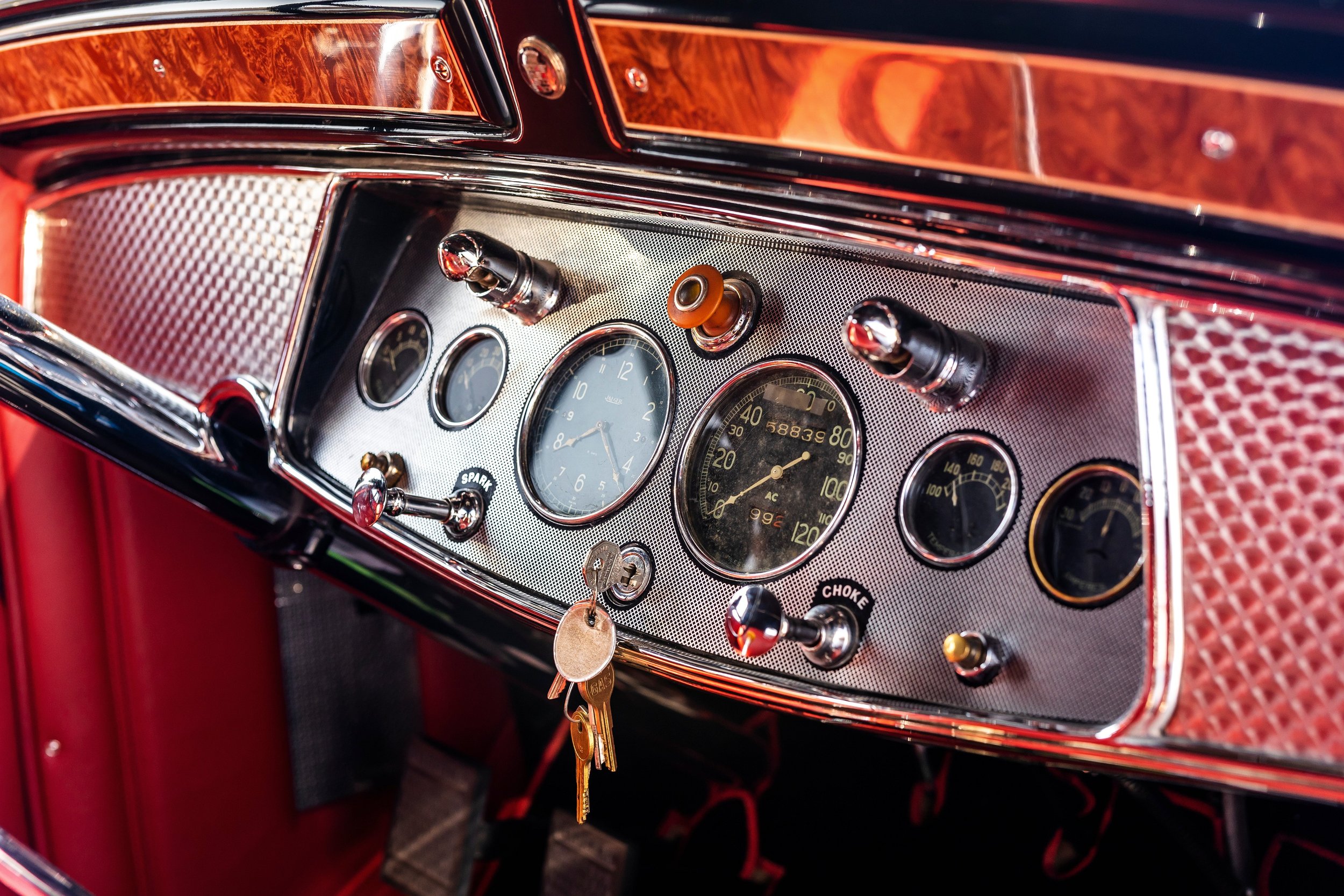1931 Cadillac V16 Model 4235 Convertible Coupe





First production 16-cylinder automobile
Effortless power, enough torque to pull from 3 MPH in top gear
Just slightly bigger in size than the Cadillac V8
“Magically smooth, uncommonly capable, quiet, powerful,” was how Cadillac described their V16 engine in 1931, and they were spot on. Towards the end of the roaring 20’s, Cadillac was striving for ways to make effortless power, matched with unparalleled luxury. While the V16 was announced after the Wall Street Crash of 1929, the release of the new Cadillac was extremely well received and nearly 3000 examples were built in the first year of production.
Released in 1930, Cadillac became the first American car manufacturer to introduce a production car with a V16 motor. In the early 1930s prestigious American car manufacturers were in a tight battle of “cylinder wars.” The likes of Packard, Franklin, Lincoln, Auburn, and Pierce Arrow all had created 12-cylinder cars by 1932. Marmon, a Cadillac competitor, thought about the idea of creating a 16-cylinder car in the late 1920s before Cadillac, but were unable to do so due to the lack of resources. With 10 body styles, it allowed customers to put their own personal touch on their cars, and there were limitless color options.
The clientele who was purchasing a car this expensive in the early 1930’s had extremely high expectations regarding both engineering characteristics and individuality. Cadillac revolutionized the way in which high-end cars were produced to control quality and keep costs down. Normally in this period, customers would order a bare rolling chassis from a company and enlist a coachbuilder to build them a body for the car, often unique to the vehicle. Though a Cadillac rolling chassis could be purchased if the customer was insistent, Cadillac had purchased both Fleetwood Metal Body and Fisher Body to control the entire coachbuilding process. Ten body styles were offered, with more than 30 additional designer drawings that could be offered to the knowledgeable buyer.
With highways becoming more prevalent and buyers becoming more informed, Cadillac’s goal for their new halo car was to be the single most opulent way to travel. Duesenberg’s inline-eight-cylinder engine was a class leader at the time, producing significant horsepower outputs, though the long crankshaft created more vibrations than Cadillac was aiming for in their new engine. By doubling the cylinders from their 341 C.I. V8 but slightly increasing the overall size to 452 C.I., Cadillac was able to utilize lighter internals to reduce vibrations and internal stress, resulting in a 16-cylinder that was smoother and much more powerful than contemporary V12’s, without taking up much more room in the engine bay.
With 165 horsepower, and 300 ft./lbs. of torque available from idle, the Cadillac V16 had conquered the cylinder wars. There was not a comparable powerplant that offered the brisk, effortless power of this V16. The V16 sold much better than Cadillac had predicted in its first year on the market, with 2500 sold in the first year. Unfortunately as the recession began to take hold, less and less V16’s were sold each year after 1930. While the car was an engineering pioneer, Cadillac lost money on each one they built, but still today, the Cadillac V16 remains one of the most substantial engineering advancements in the history of the automobile.
Specifications:
Engine: 452 cu in V16
Horsepower: 165 @ 3400 RPM
Torque: 320 ft./lbs. @ 1400 RPM
Transmission: Four-Speed Manual

